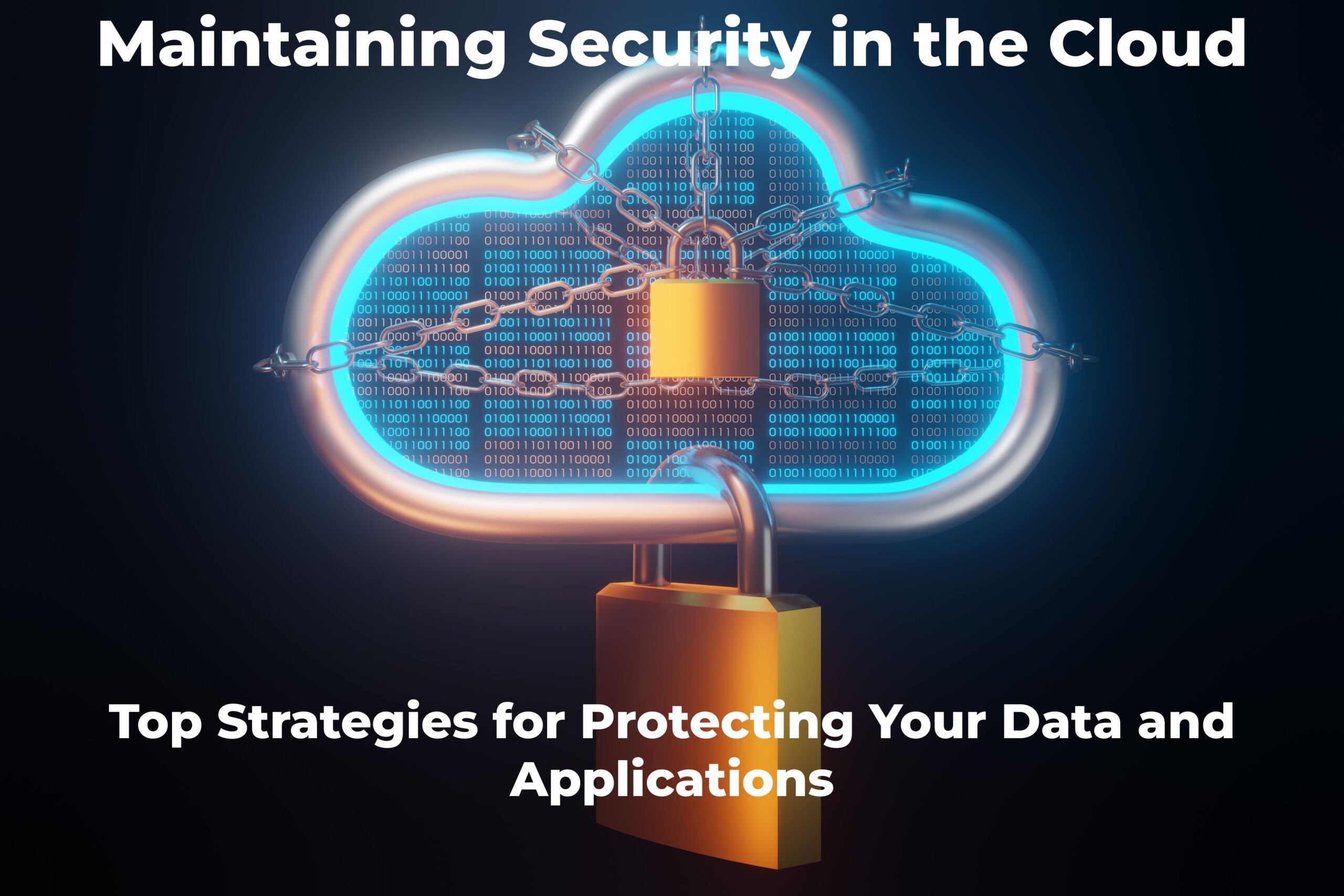In 2024, cloud adoption has become the norm for businesses of all sizes, seeking scalability, flexibility, and cost savings. As organizations transition their systems, applications, and data to the cloud, ensuring the security and privacy of this valuable information becomes a top priority. While cloud service providers often implement robust security measures, it is vital that organizations take responsibility for securing their data and applications as they move from on-premises environments to the cloud.
In this article, we will explore the top cloud security strategies for safeguarding your organization’s digital assets in an increasingly cloud-based landscape. We will discuss the importance of developing a comprehensive cloud security approach tailored to your organization’s unique requirements, as well as the roles and responsibilities involved in maintaining secure cloud ecosystems. By embracing a proactive and vigilant cloud security posture, organizations can better safeguard their valuable data and applications while capitalizing on the benefits of cloud computing.
Understanding the diverse range of cyber threats in today’s digital world and implementing effective security measures is crucial in ensuring that your organization remains protected against potential threats. Join us as we delve into the overarching security best practices for navigating the increasingly complex cloud-based environment and successfully securing your organization’s valuable data and applications.
Understanding the Shared Responsibility Model
A vital aspect of managing cloud security is understanding the shared responsibility model. This model delineates the responsibilities of both cloud service providers (CSPs) and customers in securing the cloud infrastructure and applications. CSPs are typically responsible for securing the underlying infrastructure, while customers must ensure the security of their data, applications, and configurations. Familiarizing yourself with the boundaries of responsibility and working closely with your CSP will help establish a strong foundation for your organization’s cloud security strategy.
Securing Data with Encryption and Access Control
Data security is paramount when operating in the cloud. Two key strategies for protecting your data include encryption and access control:
1. Data Encryption: Encrypting your data adds a critical layer of security, rendering it illegible to those without the proper decryption keys. Employ encryption both in transit – using protocols like SSL/TLS – and at rest, leveraging tools provided by your CSP or third-party solutions.
2. Access Control: Implement stringent access control policies to ensure that only authorized users can access your organization’s sensitive data. Utilize role-based access control (RBAC) to restrict access based on users’ roles and job functions and take advantage of multi-factor authentication (MFA) for added security.
Implementing Network Security Best Practices
Securing your cloud-based network is essential to mitigate potential cyber threats. Adopt these network security best practices to fortify your cloud environment:
1. Segmentation: Divide your cloud network into smaller, isolated segments, reducing the attack surface and the potential impact of a breach.
2. Intrusion Detection and Prevention: Implement intrusion detection and prevention mechanisms to monitor your network traffic and identify potential threats in real-time.
3. Use Virtual Private Clouds (VPCs): Employ VPCs to establish a private, isolated cloud environment in which you can host your applications and data, providing additional protection against unauthorized access.
4. Establish Secure Connections: When connecting to your cloud infrastructure, avoid public internet connections when possible, and opt for secure communication methods, such as VPNs or dedicated network connections.
Securing Your Applications in the Cloud
Safeguarding your applications in the cloud is also critical. Consider these strategies for protecting your cloud-based applications:
1. Patch Management: Keep your applications up to date with the latest security patches and updates as soon as they become available, reducing the potential vulnerabilities attackers can exploit.
2. Security Testing: Employ application security testing methods, such as vulnerability scanning, penetration testing, and static and dynamic code analysis, to identify and remediate weaknesses in your application code.
3. Container Security: If your organization utilizes containers as part of its cloud strategy, ensure you follow container security best practices, including minimizing the attack surface, isolating containers from the host system, and scanning container images for known vulnerabilities.
4. Implement Secure Development Practices: Encourage your development teams to adopt secure coding practices and leverage security tools at each stage of the software development life cycle, building security into your applications from the ground up.
Establishing a Culture of Security
Fostering a security-conscious culture within your organization is crucial for maintaining cloud security. Equip your employees with the necessary training to understand the risks and best practices associated with cloud computing. By incorporating security policies, guidelines, and ongoing employee education, your organization can minimize the risk of human-caused security breaches.
Adopting a Proactive Security Posture
Lastly, adopting a proactive security posture helps ensure that you are actively identifying and mitigating vulnerabilities. Regularly assess your cloud environment, conduct penetration tests, and stay informed about emerging threats and security best practices. Additionally, work closely with your CSP to make the most of built-in security features and stay up-to-date with any changes to their service offerings.
Conclusion
Maintaining security in the cloud is vital for safeguarding your organization’s valuable data and applications. By understanding the shared responsibility model, implementing robust data protection and network security measures, securing your applications, and fostering a security-conscious culture, you can help ensure that your organization thrives in the cloud. Implementing a proactive security posture will also keep your organization one step ahead, minimizing the risk of cyberattacks and breaches.
Contact The Saturn Partners today to learn more about our professional cybersecurity services and how we can help you secure your cloud operations. Allow our team of experts to guide your organization in developing a comprehensive, effective cloud security strategy that will protect your data, applications, and systems in an ever-evolving digital landscape.

